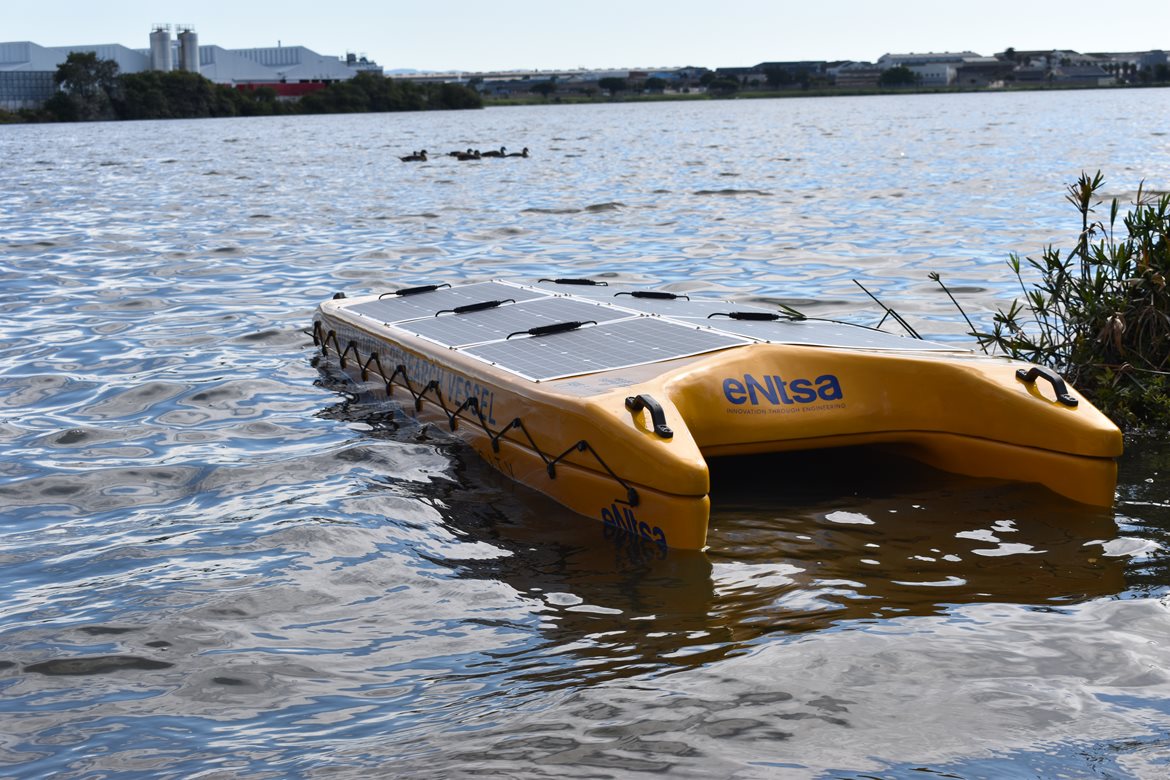“Instead of purchasing expensive equipment on the international market, we are building our own marine research assets that we can make available to scientists and the market,” says Andrew Young, manager of the Marine Robotics Unit (MRU) and engineering director of eNtsa, in which the MRU is situated.
eNtsa is an internationally recognised innovation hub within the Faculty of Engineering, the Built Environment and Technology (EBET). Research activities within marine robotics include projects related to machine learning and the integration of control systems as part of Industry 4.0.
A transdisciplinary group of researchers from the schools of engineering, physics and zoology have come together in the MRU, and developed a prototype surface autonomous vessel (SAV), designed to survey the little-researched shallow reef and estuarine environments.
Young explains: “The SAV has multiple uses – from measuring temperature, depth and salinity and potentially the growth rate of perlemoen [abalone], to other non-marine uses such as inspecting the structural integrity of dam walls. It includes WiFi, GSM and GPS communications systems and the Li-ion battery and power management system is supplemented with an onboard solar array. Lake and sea trials are underway, including a trial in collaboration with the University of Cape Town to measure how much power a vessel would use in extreme temperatures, notably in Antarctica at -60°C.”
MRU researchers are collaborating with the faculty’s Advanced Mechatronics Technology Centre to build an ocean glider to replace the use of research vessels. The drone carries sensors that measure water temperature, salinity and fluorescence. It is also used to calibrate satellite data. The ocean glider can cover hundreds of kilometres at sea using very little energy from its rechargeable battery pack.
The MRU researchers are also collaborating with the South African Institute for Aquatic Biodiversity (SAIAB) on video data analysis – developing a computer model that can identify fish species, count them and create a numerical model of what the abundancy is. This would replace physically counting them and naturally save significant amounts of research time. Additionally, a Memorandum of Understanding with SAIAB is in the Mandela University approval process. SAIAB’s list of projects require marine robotic support and the institute offers significant bursary opportunities for EBET PhD, master’s and final year projects.
“Each project in marine robotics is unique and includes complex coupled systems of mechatronics, materials science, physics, advanced manufacturing processes and design,” says Young. “The MRU also contributes to creating competence in designing and optimising solutions in support of maritime sciences using sophisticated software, advanced hardware, data management and communication systems.”
Since its launch in 2019, the MRU has secured several partnerships and support, including funding from the South African International Maritime Institute (SAIMI). SAIMI was established in 2014 by Operation Phakisa for the Oceans Economy to focus on building, research and innovation, skills development and advocacy in the maritime environment.
The former Executive Dean of EBET, Professor Ben van Wyk, introduced the MRU’s research to Montpellier University in France, which led to collaborative funding agreement through which a researcher from Montpellier will be placed at the Nelson Mandela University for a year. Engineer Karen Godary-Dejean is the selected researcher and she will join the team at Mandela University as soon as the pandemic permits.
